Coconut (Cocos nucifera L.) is a palm plant of the genus Palmaceae. It is one of the world's fourth largest woody oil crops. It is mainly distributed in more than 90 countries and regions in the tropical and subtropical regions between 20° north and south latitudes. It is a tropical life because the tree is an important source of oil and protein for residents of the tropics.
Coconut planting area in China is about 600,000 acres, which is mainly distributed in the southeast coast of Hainan Island and Sansha City. There are also a small number of plants in Taiwan, Guangdong, Yunnan and Guangxi. At present, the total annual output value of coconut-related industries exceeds 50 billion RMB in Hainan Province. More than 2 million people work in the coconut industry every year, which plays an important role in the economic development of Hainan Province.
Coconut Research Institute ,CATAS has some platforms for the preservation of important germplasm resources such as National Tropical Palm Gerplasm Repository (Coconut) and Coconut Germplasm Repository, Wenchang City, Ministry of Agriculture and Rural Affairs, P.R.China which preserve more than 190 pieces of coconut germplasm resources around the world. Now CRI has undertaken more than 100 international cooperation, provincial and ministerial level projects, and has obtained more than 40 scientific research achievements. It has successively cultivated the first coconut hybrid "Wenye 78F1" in China, and the new high-yield early-sealed coconut variety "Wenye No. 2". "Wenye No. 3" and "Wenye No. 4" series; carried out research and promotion of high-yield and high-efficiency cultivation techniques of coconut, compound breeding techniques under the forest, coconut molecular marker-assisted breeding, genome research, and undertaking new professional farmer training and agricultural technology promotion work. At the same time, CRI undertakes the coconut-related technical training tasks of the students from tropical countries along the “One Belt and One Road”. It is an important coconut research, demonstration, training and education base in China.
Research Department
Coconut Research Department
Coconut Research Department (CRD) is undertaking coconut research on germplasm collection, preservation and evaluation, germplasm innovation and utilization, plant nutrition and physiological ecology, high-yielding and high-valued planting patterns, There are 18 researchers in the CRD, including 11 professors and 5 staff with Ph.D.
Technology Platform
National Tropical Palm Germplasm Nursery (Coconut)
Germplasm Repository of Coconut, Wenchang City, Ministry of Agriculture and Rural Affairs
Strategic Alliance of Technology Innovation in Coconut Industry
Introduction and breeding base for tropical oil crops, Hainan Province
Technology Achievements
1. Breeding of new coconut varieties
After the first coconut hybrid variety "Wenye 78F1" was cultivated, a series of high-yield early-sealing coconut varieties such as "Wenye No. 2", "Wenye No. 3" and "Wenye No. 4" were selected in Coconut Research Institute, CATAS.
|
|
Wenye 78F1 | Wenye No.2 |
|
|
Wenye No.3 | Wenye No.4 |
|
|
Wenye No.5 | Wenye No.6 |
2. Techniques of high – yielding cultivation
Coconut Research Department has carried out high-efficiency fertilization and coconut nutrient diagnosis research for coconut for many years and integrated transformation technology for a set of low-yield coconut garden. This technology won the 2004 National Agriculture, Animal Husbandry and Fishery Harvest Award. Based on the technology, we constructed a set of high-efficiency models for coconut plantation and developed Hainan Provincial local standard "Technical Regulations for Coconut Planting and Management", published 6 related monographs and applied patented products such as coconut special fertilizer companion. Using fertilizer companion for a long term can promote coconut tree growth and increase coconut production by 50%. and improve the quality of coconut fruit.
|
|
Coconut fertilizer research and development | Promotion and application of coconut fertilizer |
3. Technique of coconut seeding breeding
Based on coconut “whole root seedling” technology, a coconut seedling breeding technology system was established. Compared with the traditional seedling raising methods such as ground seedling raising and bag seedling raising, the growth indexes of the seedlings of the technology are significantly increased, the seedling roots have obvious advantages, and the time of emergence is shortened by 3-4 months. The technology won 1 national invention patent (ZL 2014 1 0104319.9), Second Prize of Hainan Provincial Achievement Transformation in 2014 and the third of China Agricultural Science and Technology Award in 2014-2015.
|
|
Comparison among whole root seedling, ground seedling raising and bag seedling raising | Standardized seedling demonstration |
|
|
Award certificate | Patent certificate |
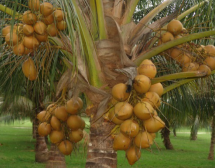

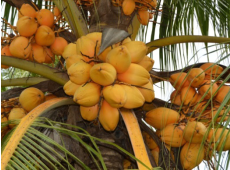
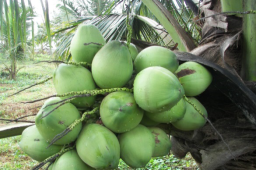
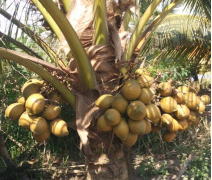
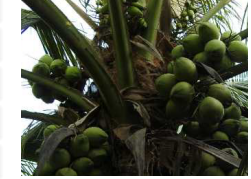
![VG}`]U)11@SA_(FD6{2KE2S.png VG}`]U)11@SA_(FD6{2KE2S.png](/en/upload/images/2019/10/d857f075fd1fb20d.png)
![$GB4Z`)T0B%KB]FV)FL])]R.png $GB4Z`)T0B%KB]FV)FL])]R.png](/en/upload/images/2019/10/9ca42125cf66369d.png)
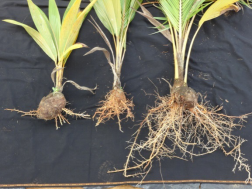
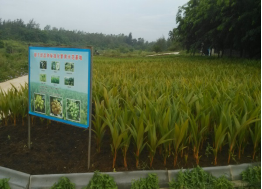
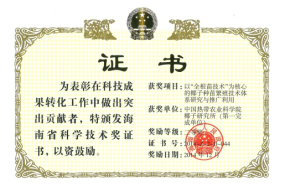
![XX$MN@34~(RV[D{)N}@]{0H.png XX$MN@34~(RV[D{)N}@]{0H.png](/en/upload/images/2019/10/d71e0a5188ff1e20.png)
